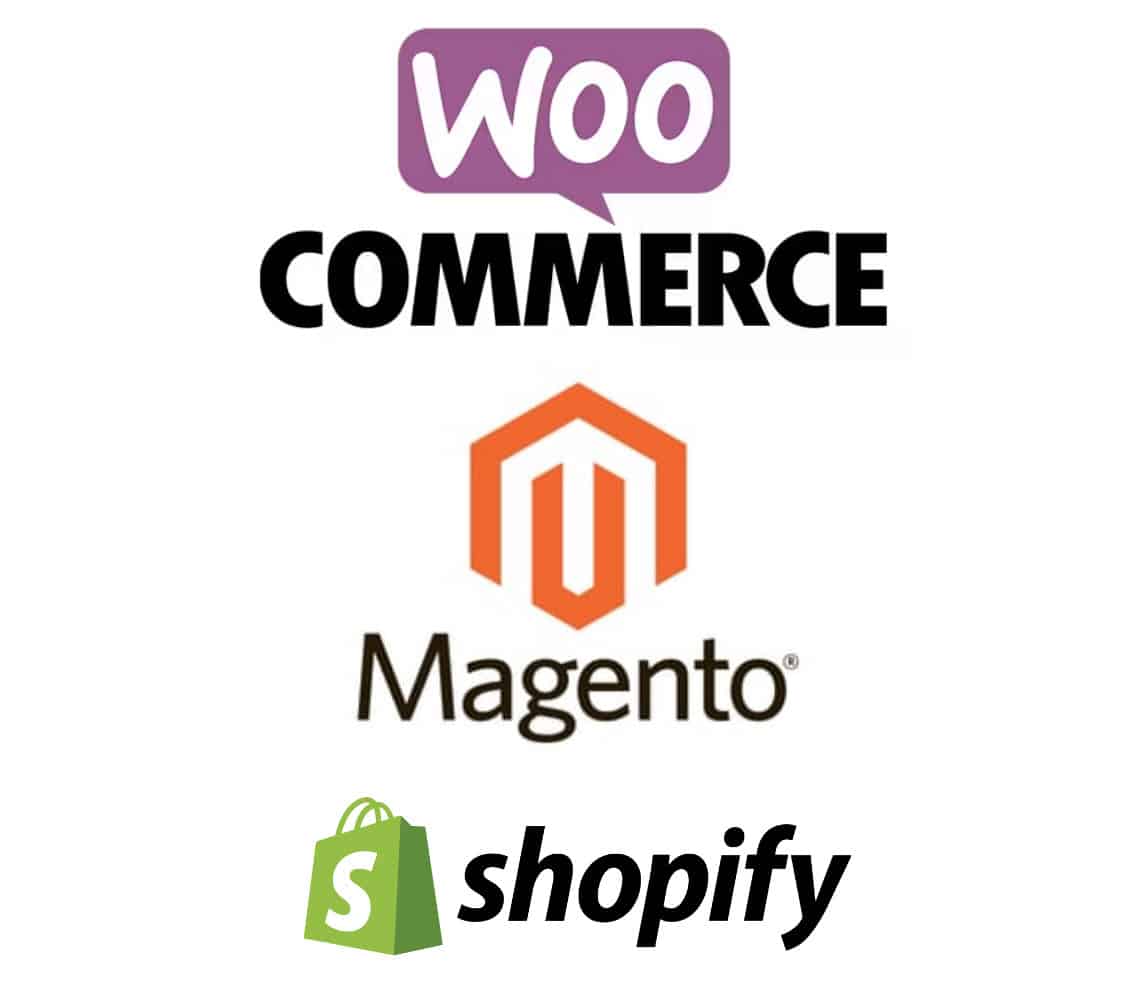Your First Ecommerce Store
The need for SME’s to consider Ecommerce
In a challenging and fast moving business landscape, establishing a robust online presence has become an additional consideration for Small and Medium-sized Enterprises (SMEs). As the digital marketplace continues to flourish, SMEs are recognising the significance of venturing into e-commerce as a strategic move to expand their reach, increase sales, and foster customer engagement. However, the development of an e-commerce website is a multifaceted endeavour that requires careful consideration of various factors to ensure its effectiveness and success.
Venturing into Ecommerce
Embarking on the journey to develop your first e-commerce website necessitates a thoughtful and strategic approach. SMEs must navigate through the complexities of defining their objectives, understanding their target audience, selecting the appropriate e-commerce platform, and ensuring a user-friendly design with intuitive navigation. The mobile responsiveness of the website, secure payment gateways, and an effective product catalogue are pivotal elements in creating a positive user experience. Additionally, integrating SEO optimisation strategies, formulating a robust marketing plan, and planning for post-launch support and analytics are crucial steps for long-term success.
This report aims to serve as a comprehensive guide for SMEs, offering insights into the key considerations and best practices when developing their first e-commerce website. By delving into these aspects, SMEs can not only establish a strong online presence but also lay the groundwork for sustainable growth in the competitive digital landscape.
Business Goals and Objectives for an Ecommerce Site
When assessing business goals and objectives for an e-commerce website, it’s essential to consider various factors to ensure the success and effectiveness of the online platform. Here are key considerations:
Define Clear Business Goals:
Identify specific, measurable, achievable, relevant, and time-bound (SMART) goals for your e-commerce site. Examples include increasing online sales by a certain percentage, expanding the customer base, or improving customer retention.
Understand Target Audience:
Clearly define your target audience and understand their needs and preferences. Tailor your e-commerce strategy to cater to your audience, ensuring a more personalised and relevant user experience.
Sales and Revenue Targets:
Set realistic sales and revenue targets for your e-commerce site. Consider factors such as average order value, conversion rates, and customer lifetime value when establishing these targets.
User Experience (UX) and Design:
Prioritise a user-friendly design to enhance the overall user experience. The website should be easy to navigate, visually appealing, and optimised for both desktop and mobile devices.
Conversion Optimisation:
Implement strategies to increase conversion rates, such as optimising product pages, streamlining the checkout process, and providing clear calls-to-action. A seamless user journey can significantly impact conversion rates.
Marketing and Promotion:
Develop a comprehensive marketing strategy, including digital marketing, social media, and email campaigns. Consider how you will attract new customers, retain existing ones, and promote special offers or seasonal discounts.
Improve Your Ecommerce Website Performance Today Call 01733 361729
E-commerce Platform Selection:
The choice of an appropriate e-commerce platform is pivotal in the development process. SMEs should carefully evaluate and select a reliable and user-friendly platform that aligns with their business requirements. Factors such as scalability, features (payment gateways, inventory management), and overall ease of use should be considered to ensure long-term viability and adaptability.
Adding e-commerce to your business is a significant step, and choosing the right e-commerce platform is crucial for success. Several key considerations should guide your decision-making process.
Firstly, assess the scalability of the e-commerce platform. Your business may experience growth, and the platform should be able to accommodate increased traffic, product listings, and transactions. A scalable platform ensures that you can expand your online operations without facing technical limitations.
Consider the user experience (UX) and design capabilities of the e-commerce platform. A user-friendly interface is essential for engaging customers and encouraging conversions. Look for platforms that offer customisation options, responsive design, and intuitive navigation to create a seamless and visually appealing online shopping experience.
Integration capabilities are another critical factor. Ensure that the e-commerce platform can seamlessly integrate with your existing systems, such as inventory management, accounting, and customer relationship management (CRM) tools. Integration streamlines business operations and enhances efficiency.
Payment and security features are paramount. Choose a platform that supports multiple payment options and provides robust security measures to protect customer data and ensure secure transactions. Compliance with industry standards and regulations is essential for building trust with your customers.
Evaluate the platform’s marketing and analytics tools. Effective marketing is crucial for driving traffic and increasing sales. Look for features like search engine optimisation (SEO) tools, social media integration, and analytics to track customer behaviour and optimise your marketing strategies.
Consider the level of customer support and available resources provided by the e-commerce platform. Reliable customer support is essential for resolving issues promptly. Additionally, a platform that offers documentation, tutorials, and a supportive community can be valuable for your team’s learning curve and troubleshooting.
Assess the total cost of ownership, including initial setup fees, transaction fees, and ongoing subscription costs. Understanding the pricing structure and potential hidden costs is crucial for budgeting and ensuring a positive return on investment.
Lastly, stay informed about the platform’s updates and future roadmap. Choose a platform that regularly updates its features and stays aligned with industry trends. This ensures that your e-commerce solution remains technologically relevant and continues to meet the evolving needs of your business and customers.
By thoroughly considering these aspects, you can make an informed decision when selecting an e-commerce platform that aligns with the goals and requirements of your SME.
Ecommerce platform selection
WooCommerce, Magento, and Shopify are popular e-commerce platforms, each with its own set of advantages and disadvantages. As a Small Medium Enterprise (SME) considering the integration of e-commerce into your business, it’s crucial to understand the characteristics of each platform to make an informed decision.
WooCommerce, a WordPress plugin, is renowned for its seamless integration with WordPress websites. One of its major advantages is its user-friendly interface, making it accessible for businesses of all sizes. Its flexibility allows for customisation, and the vast array of plugins available enables additional functionalities. However, as WooCommerce operates as an extension of WordPress, it may be more suitable for smaller to medium-sized businesses rather than enterprises with complex requirements.
Magento, on the other hand, is an open-source platform that caters to larger enterprises and businesses with intricate e-commerce needs. Its scalability and flexibility are key advantages, providing the capability to handle extensive product catalogues and complex transactions. However, these benefits come with a trade-off in terms of complexity and a steeper learning curve, making it more suitable for businesses with a dedicated IT team or resources for professional development.
Shopify, a hosted solution, is known for its simplicity and quick setup, making it an attractive option for businesses looking to launch their online store swiftly. The platform handles technical aspects like hosting and security, freeing business owners to focus on sales. Its user-friendly interface requires minimal technical knowledge, making it accessible for SMEs. However, the trade-off for this simplicity lies in customisation limitations compared to WooCommerce and Magento, which might be a disadvantage for businesses with unique or complex requirements.
Choose carefully
The choice between WooCommerce, Magento, and Shopify depends on the specific needs and scale of your business. WooCommerce is suitable for smaller businesses with a focus on simplicity and customisation, Magento excels in handling complex requirements for larger enterprises, and Shopify offers a quick and user-friendly solution for businesses prioritising ease of use and a rapid launch. Careful consideration of your business goals, technical expertise, and budget will help determine the most fitting e-commerce platform for your needs.
UX Considerations
Seamless and effective interaction
When developing an e-commerce site as an SME (Small and Medium-sized Enterprise), it is crucial to prioritise various User Experience (UX) factors to ensure a seamless and effective interaction for your users. One fundamental aspect is the site’s navigation. Intuitive and straightforward navigation is essential for users to easily find the products they are looking for. Implementing clear categories, filters, and a well-organised menu structure can significantly enhance the overall user experience.
Site responsiveness
Another critical UX consideration is the site’s responsiveness. With users accessing e-commerce sites through various devices, including smartphones and tablets, it is imperative to design a responsive website that adapts to different screen sizes. This ensures a consistent and user-friendly experience across all devices, ultimately increasing user satisfaction and engagement.
User Friendly Checkout
The checkout process is a pivotal point in the user journey, and it demands special attention. A streamlined and user-friendly checkout experience is essential to reduce cart abandonment. Simplify the steps, minimise form fields, and provide clear instructions to guide users through the process smoothly. Implementing guest checkout options can also enhance the overall convenience for users who prefer a quicker purchase process.
Slow load times lose sales
Loading times significantly impact user satisfaction and search engine rankings. A slow website can lead to frustration and higher bounce rates. As an SME, optimising the site’s performance by compressing images, leveraging browser caching, and utilising Content Delivery Networks (CDNs) can contribute to faster loading times, ensuring a positive user experience.
Be secure
Security is paramount in e-commerce, especially when handling sensitive information such as payment details. Ensuring the implementation of robust security measures, such as SSL certificates and secure payment gateways, instils trust in users and safeguards their personal information.
Get personal
Personalisation is another UX factor that can greatly enhance the user experience. Implementing personalised recommendations based on user behaviour and preferences can contribute to higher conversion rates and customer satisfaction. Additionally, incorporating user-friendly product search functionalities, such as predictive search and autocomplete, can further improve the overall shopping experience.
Testing and optimisation
Lastly, ongoing testing and optimisation are crucial for maintaining a positive UX. Regularly analyse user behaviour, gather feedback, and conduct usability testing to identify areas for improvement. Continuously refining the site based on user insights will contribute to a more user-centric and successful e-commerce platform.
Ecommerce Security Measures
Implementing an eCommerce system requires careful consideration of various security measures to protect sensitive customer information, financial transactions, and overall system integrity. Here are key security measures to take into account:
Secure Sockets Layer (SSL) Encryption:
Use SSL certificates to encrypt data transmitted between the user’s browser and the web server. This includes sensitive information such as login credentials, personal details, and payment information.
Payment Card Industry Data Security Standard (PCI DSS) Compliance:
Comply with PCI DSS standards if your eCommerce system handles credit card transactions. This involves secure storage, transmission, and processing of cardholder data.
Secure Hosting and Infrastructure:
Choose a reputable hosting provider that implements security best practices. Regularly update and patch the server’s operating system, web server, and other software components to address vulnerabilities.
Regular Security Audits and Penetration Testing:
Conduct regular security audits and penetration testing to identify and address vulnerabilities before malicious actors can exploit them. This helps ensure the ongoing security of your system.
User Authentication and Authorisation:
Implement strong authentication mechanisms for user accounts, such as multi-factor authentication (MFA). Ensure proper authorisation controls to restrict access to sensitive areas based on user roles and responsibilities.
Data Encryption at Rest:
Encrypt sensitive data stored in databases or other storage systems to protect it from unauthorised access in case of a security breach.
Regular Software Updates:
Keep all software components, including the eCommerce platform, plugins, and third-party libraries, up to date with the latest security patches to address known vulnerabilities.
Firewalls and Intrusion Detection Systems (IDS):
Deploy firewalls to monitor and filter incoming and outgoing network traffic. Consider using intrusion detection systems to identify and respond to potential security threats.
Secure File Uploads:
If your eCommerce platform allows file uploads (e.g., product images), implement proper validation and sanitation to prevent malicious file uploads that could compromise the system.
Secure API Practices:
If your eCommerce system relies on APIs (Application Programming Interfaces), ensure that API endpoints are secure, use authentication tokens, and implement proper access controls.
Backup and Disaster Recovery:
Regularly backup critical data and implement a disaster recovery plan to ensure business continuity in case of data loss or system compromise.
Customer Education and Communication:
Educate customers about best security practices, such as creating strong passwords and monitoring their accounts. Communicate proactively about any security incidents or updates affecting the eCommerce platform.
Monitoring and Logging:
Implement robust monitoring and logging mechanisms to detect and respond to suspicious activities. Regularly review logs for potential security incidents.
By addressing these security measures, you can help create a more secure environment for your eCommerce system and protect both your business and your customers from potential threats.
Shipping and logistics considerations
Carrier selection
Implementing an ecommerce system requires careful consideration of shipping and logistics to ensure a smooth and efficient operation. One crucial factor is the selection of shipping carriers and services. Retailers must evaluate various carriers based on factors such as delivery speed, reliability, and cost. This decision should align with customer expectations and the nature of the products being sold.
Shipping zones and rates
Another essential consideration is the establishment of shipping zones and rates. Different regions or countries may have varying shipping costs and delivery times. Implementing a well-defined structure for shipping zones and rates helps in providing transparency to customers and managing shipping costs effectively.
Fulfilment systems
Integration with order fulfilment systems is crucial for streamlined logistics. Connecting the ecommerce platform with warehouse management systems allows for real-time tracking of inventory, enabling accurate order fulfilment and reducing the risk of overselling. This integration also facilitates the automation of shipping processes, improving overall efficiency.
Returns management
Returns management is an often overlooked aspect that requires careful attention. Implementing a clear and customer-friendly return policy, along with a straightforward process for returns, is essential. This can include providing pre-printed return labels, clear instructions, and efficient communication to enhance the overall customer experience.
Overseas shipping
International shipping poses additional challenges that need consideration. Compliance with customs regulations, duties, and taxes must be factored into the ecommerce system. Clear communication with customers about potential additional charges and longer delivery times for international orders is crucial to managing expectations.
The importance of transit packaging
Packaging plays a vital role in both the customer experience and cost management. Optimal packaging design ensures product protection during transit, minimises dimensional weight charges, and contributes to sustainability goals. Balancing these considerations can positively impact shipping costs and customer satisfaction.
Enhance trust
Real-time tracking and communication are key components of a successful ecommerce logistics strategy. Providing customers with accurate and timely information about the status of their orders enhances trust and satisfaction. Integration with tracking systems and proactive communication about shipping updates contribute to a positive overall experience.
Ongoing evaluation and optimisation of the shipping and logistics strategy are necessary. Regularly reviewing carrier performance, analysing shipping costs, and seeking opportunities for process improvement allow ecommerce businesses to adapt to changing market conditions and customer expectations.
Customer Support Considerations
When implementing an ecommerce system, careful consideration of customer support is crucial for ensuring a positive and seamless experience for users. One primary consideration is the accessibility and responsiveness of customer support channels. Offering multiple communication channels such as live chat, email, and phone support allows customers to choose the method that best suits their preferences and urgency of their query.
Timely and efficient issue resolution is another key factor. Implementing a robust ticketing system and providing comprehensive training to customer support representatives can help streamline the process of addressing customer concerns. Quick response times and effective problem-solving contribute significantly to customer satisfaction and retention.
Integration of self-service options within the ecommerce platform is becoming increasingly important. Providing a comprehensive FAQ section, knowledge base, or community forums can empower customers to find solutions to common issues independently. This not only enhances the user experience but also reduces the workload on customer support teams.
Consistency in communication is essential to building trust and reliability. Ensuring that customer support representatives are well-versed in the product offerings, policies, and procedures helps in providing accurate and consistent information to customers. This consistency extends to communication across different channels, maintaining a unified and coherent brand voice.
Security and privacy considerations are paramount in ecommerce, and this extends to customer support interactions. Implementing secure communication channels and adhering to data protection regulations instills confidence in customers regarding the confidentiality of their personal and financial information.
Regular training and updates for customer support teams are vital to keeping them informed about any changes in products, policies, or the ecommerce system itself. This ongoing education ensures that representatives can address customer queries with accuracy and authority.
Monitoring and analysing customer feedback and support interactions are valuable tools for continuous improvement. Utilising customer feedback to identify pain points and areas for enhancement in the ecommerce system can contribute to refining the overall customer support strategy and optimising the online shopping experience.
A well-thought-out customer support strategy is integral to the success of an ecommerce system. By prioritising accessibility, efficiency, self-service options, consistency, security, ongoing training, and feedback analysis, businesses can cultivate a positive and supportive environment for their customers, fostering loyalty and satisfaction.
Legal Compliance
When considering the implementation of an ecommerce system in the UK, businesses must pay careful attention to various legal considerations to ensure compliance with regulations and protect both the business and its customers.
One crucial aspect is data protection and privacy. The General Data Protection Regulation (GDPR) applies to all businesses handling personal data within the European Union, including the UK. Ecommerce platforms often involve the collection and processing of customer information, such as names, addresses, and payment details. Therefore, businesses must ensure that their ecommerce system is designed to comply with GDPR requirements, including obtaining consent for data processing, implementing secure data storage practices, and providing customers with the right to access and control their personal data.
Consumer protection laws are another essential consideration. The Consumer Rights Act 2015 sets out rules regarding the quality of goods and services, as well as the rights of consumers when making purchases online. Businesses need to provide accurate product information, transparent pricing, and a clear returns policy. Additionally, the ecommerce system should offer secure payment methods to protect customers’ financial information.
Terms and conditions and privacy policies are critical legal documents for ecommerce websites. Clear and comprehensive terms and conditions can help manage expectations, outline the rights and responsibilities of both parties, and address issues such as refunds, returns, and dispute resolution. Privacy policies should detail how customer data is handled, stored, and protected, aligning with data protection regulations.
Payment card industry compliance is essential when dealing with online transactions. Businesses must follow Payment Card Industry Data Security Standard (PCI DSS) requirements to ensure the secure processing, storage, and transmission of credit card information. Non-compliance may result in fines and reputational damage.
Accessibility is increasingly becoming a legal consideration in the digital space. The Equality Act 2010 in the UK requires businesses to make reasonable adjustments to ensure their services are accessible to people with disabilities. This includes ensuring that the ecommerce platform is designed and developed with accessibility in mind, allowing all customers to navigate and make purchases easily.
Finally, businesses should stay informed about evolving legal landscapes. Regulations and requirements may change over time, so regularly reviewing and updating ecommerce systems to remain in compliance with current laws is essential for long-term success. Seeking legal advice or consultation with experts in ecommerce law can be beneficial to ensure a thorough understanding and implementation of all relevant legal considerations.
Your First Ecommerce Store Marketing and SEO
When developing your first ecommerce store, it’s crucial to integrate effective marketing and SEO strategies to enhance online visibility, attract potential customers, and drive sales. One of the primary considerations is optimising product pages for search engines. Each product should have a unique and compelling title, along with a detailed description that incorporates relevant keywords. This helps improve the site’s search engine ranking and ensures that potential customers can easily find the products they are looking for.
Additionally, a well-structured website with clear navigation is essential for both user experience and SEO. The site’s architecture should be organised logically, making it easy for users and search engine bots to navigate through categories, subcategories, and individual product pages. Implementing user-friendly URLs and maintaining a clean and concise sitemap further contributes to search engine visibility.
Content marketing is another critical aspect of ecommerce SEO. Creating high-quality, engaging content such as blog posts, articles, and product guides not only provides value to customers but also gives search engines more content to index. Regularly updating the content and keeping it relevant to the target audience can contribute to a higher search ranking.
Social media integration is also pivotal in an ecommerce marketing strategy. Leveraging platforms like Instagram, Facebook, and Twitter can help promote products, engage with customers, and drive traffic to the ecommerce site. Social signals, such as likes, shares, and comments, can positively impact search engine rankings.
Furthermore, implementing an effective backlink strategy is essential for SEO success. Building high-quality, authoritative backlinks from reputable websites can significantly improve the ecommerce site’s credibility in the eyes of search engines, leading to higher rankings.
In terms of paid advertising, a well-executed pay-per-click (PPC) campaign can complement SEO efforts. Targeting relevant keywords, demographics, and interests ensures that the ads reach the intended audience, driving targeted traffic to the ecommerce site.
Monitoring and analysing performance metrics is crucial for ongoing optimisation. Regularly reviewing website analytics, conversion rates, and keyword performance can provide valuable insights into the effectiveness of the marketing and SEO strategies. Adjustments and improvements can then be made based on the data gathered, ensuring the continued success of the ecommerce system.
WooCommerce Plugins
When implementing a WooCommerce e-commerce system, there are several plugins and add-ons available to enhance its performance, functionality, and user experience. Here are some popular and widely recommended ones:
- W3 Total Cache: Helps in optimising website performance by caching pages and reducing load times.
- Yoast SEO: Enhances your site’s search engine optimisation, helping you optimise product pages and content for better visibility in search engines.
- Sucuri Security: A security plugin that helps protect your site from threats, malware, and other vulnerabilities.
- MonsterInsights: Integrates Google Analytics with your WooCommerce store, providing valuable insights into customer behaviour and helping you make data-driven decisions.
- WooCommerce Subscriptions: Allows you to offer subscription-based products and services on your site, enabling recurring revenue.
- WooCommerce Bookings: Useful for businesses that require appointment scheduling, such as hotels, consultants, or service providers.
- WooCommerce Memberships: Enables you to create a membership-based system on your site, restricting content or products to specific members.
- WooCommerce PDF Invoices & Packing Slips: Generates professional-looking invoices and packing slips for your customers.
- Table Rate Shipping for WooCommerce: Provides advanced shipping options, allowing you to create custom shipping methods based on various conditions.
- WooCommerce Customiser: Allows you to customise the appearance of your store without touching code, providing a user-friendly way to modify colours, fonts, and layout.
- LiveChat: Adds live chat functionality to your website, improving customer support and engagement.
- WooCommerce Multilingual: Essential if you plan to sell to a global audience, as it helps in creating a multilingual online store.
- UpdraftPlus: A backup plugin to ensure you have regular backups of your website data, providing peace of mind in case of unexpected issues.
- Stripe for WooCommerce: If you plan to accept credit card payments, the Stripe plugin provides a secure and efficient payment gateway.
Always ensure that the plugins you choose are regularly updated, compatible with your version of WooCommerce, and have good reviews and support from the developers. Additionally, be mindful of the number of plugins you install to prevent performance issues.
Our Reviews








